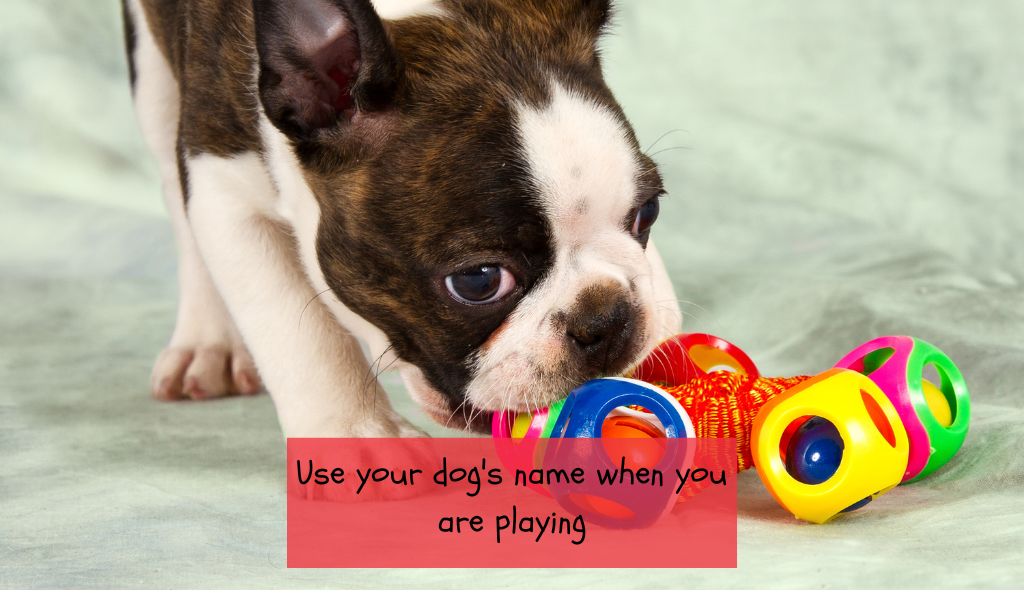One of the first things you should teach your dog is to respond to his name.
This may seem like a simple task, but it can make a big difference in your dog’s behaviour and safety.
In this article, we will discuss how to train a dog to understand his name.
Choose a name that is easy to say. Use your dog’s name when you are out and about, during playtime and training. Be consistent and always reward him when he responds. He will soon recognise his name.
Why is it important for a dog to know his name?
Your dog’s name is his personal identifier, and it is important for him to understand it.
Here are some reasons why:
Safety: If your dog knows his name, he will come to you when you call him. This can prevent him from running away or getting into dangerous situations.
Communication: Your dog’s name is the first word he needs to learn to communicate with you. It helps you to get his attention and give him commands.
Bonding: Teaching your dog his name is a great way to start building a bond between you and your pet. It shows him that you care and are interested in his well-being.
How to train a dog to understand his name
Training your dog to understand his name can be done in a few easy steps:
Step 1: Choose a name
Choose a name that is easy to pronounce and remember.
Avoid names that sound similar to other words or commands. Use your dog’s name consistently and avoid changing it.
Step 2: Associate the name with positive experiences
Associate your dog’s name with positive experiences such as treats, toys, and playtime.
Say his name before giving him something he enjoys. This will help him to form a positive association with his name.

Step 3: Repetition
Repeat your dog’s name several times throughout the day.
Say it when you are playing with him, feeding him, or petting him. This will help him to learn his name quickly.
Step 4: Use a command
Once your dog understands his name, you can use a command to get his attention.
Say his name followed by a command such as “come” or “sit.” This will help him to understand what you want him to do.
Step 5: Practice in different environments
Once your dog has learned his name, it’s important to practice in different environments.
Try calling his name when he is playing, sleeping, or eating. This will help him to understand that his name is important no matter what he is doing.
Step 6: Reinforce good behaviour
Reinforce good behavior by using your dog’s name when he does something positive.
For example, if he comes to you when you call his name, give him a treat or praise him. This will encourage him to continue responding to his name.
Step 7: Correct bad behaviour
If your dog ignores his name or does not respond, correct his behaviour in a positive manner. Use a different tone of voice or try calling his name from a different location.
Avoid scolding or punishing your dog, as this can cause fear and anxiety.
Tips for training a dog to understand his name
- Use a positive tone of voice when saying your dog’s name.
- Avoid using your dog’s name in a negative context, such as when scolding him.
- Use your dog’s name before giving him a command.
- Make training sessions short and fun.
- Use treats and positive reinforcement to encourage good behaviour.
Common mistakes to avoid
Inconsistency: Using different names or tones of voice can confuse your dog and make it harder for him to learn his name.
Negative Reinforcement: Using your dog’s name in a negative context can make him associate it with something bad and reduce the effectiveness of the training.
Overuse: Repeating your dog’s name too often can cause him to ignore it or become desensitized to it.
Lack of Patience: Training your dog takes time and patience. Don’t expect him to learn his name overnight.
FAQs
Q: How long does it take to train a dog to understand his name?
A: It depends on the dog’s breed and age, but most dogs can learn their name within a few days to a week.
Q: Can you change a dog’s name?
A: Yes, you can change a dog’s name, but it may take longer for him to learn his new name.
Q: What should I do if my dog doesn’t respond to his name?
A: If your dog doesn’t respond to his name, try using a different tone of voice or a different name. You can also try using treats or toys to get his attention.
Conclusion and final thoughts ?
Training your dog to understand his name is an essential part of dog ownership.
It helps to keep him safe, improve communication, and strengthen the bond between you and your pet.
By using positive reinforcement, repetition, and consistency, you can teach your dog his name quickly and easily.
Remember to be patient and avoid common mistakes to ensure a successful training experience.










